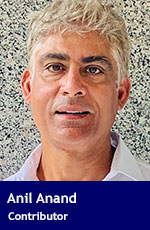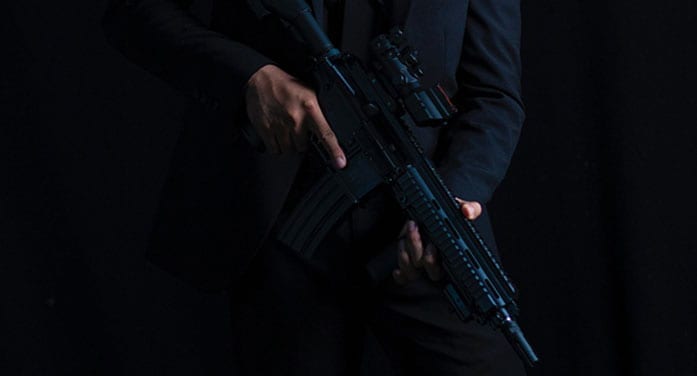 Justice Anne Molloy recently found the man who drove a van down Toronto’s sidewalks, trying to kill as many people as he could, guilty of murdering 10 and attempting to kill 16 others. The judge also took the extraordinary decision to refer to him as “John Doe,” denying him any notoriety he might have expected or sought.
Justice Anne Molloy recently found the man who drove a van down Toronto’s sidewalks, trying to kill as many people as he could, guilty of murdering 10 and attempting to kill 16 others. The judge also took the extraordinary decision to refer to him as “John Doe,” denying him any notoriety he might have expected or sought.
The Ontario Superior Court of Justice judge rejected this deranged man’s controversial defence that autism had caused him not to know that mass murder is wrong. She was decisive and efficient in delivering her verdict, sensitive to the victims’ families and community. She did her part to diffuse the accused’s motivation to attain notoriety, an admission he had made to psychiatrists.
The judge noted:
“Mr. Doe thought about committing these crimes over a considerable period of time and made a considered decision to proceed. His attack on these 26 victims that day was an act of a reasoning mind, notwithstanding its horrific nature and notwithstanding he has no remorse for it and no empathy for his victims.”
Molloy did what New Zealand Prime Minister Jacinda Ardern did by not naming the shooter who killed 50 people at two mosques in Christchurch in 2019. Ardern noted: “He sought many things from his act of terror, but one was notoriety, and that is why you will never hear me mention his name.” She added: “He is a terrorist, he is a criminal, he is an extremist. But he will, when I speak, be nameless.”
On the other hand, the media in the Toronto case completely disregarded the strong and important message the judge sent – to deny this deranged man the notoriety and fame he so perversely sought and to mitigate the potential of this atrocity to motivate anyone else.
Both of these leaders sought to provide a new social standard for condemning mass murders, but in both cases, the media disregarded the principle of the nameless. They justify their behaviour as an attempt to balance journalistic responsibility while supposedly not glorifying acts of violence. Paul Hambleton, CBC’s director of journalism standards and practices, put it in the following terms:
“It is not our role to filter or purposefully withhold information of this nature. This would lead to unfounded speculation in the absence of information. Our reporting on the shooter is framed around what we believe the public needs to know to help make sense of the horrific nature of the massacre. But no more than that.”
While journalistic independence and balancing of considerations are legitimate, complex and challenging decisions, it would be refreshing to see a progressive outlet take the position that it’s worthwhile testing a different approach. How much benefit is really gained by identifying the accused, especially following incidents that are widely reported?
- Could news reports at least refuse to publicly name such suspects while providing alternative links to far less widely circulated, publicly available official documents for those really intent on identifying John Doe, such as a court docket?
- How about naming the accused once during the initial reporting and subsequently leaving the accused nameless by simply referring to the initial report?
- How about refraining from naming the accused in live reporting and referring interested viewers to a single report of the accused’s name in a web report?
These aren’t ideal solutions, but they would greatly mitigate the unwarranted and unnecessary popularization of the accused.
The widespread reporting of the name of the Toronto accused was a race by journalists to be the first to titillate instead of doing the right thing. The vast majority of people will make no more or less of the information about this incident by knowing the accused’s name. It will make no difference to most of us, but it will to some. And recall that this person told psychiatrists he committed the acts to attain notoriety.
The way the media report an event can play a role in increasing the probability of imitation. The extensive media coverage – often repeatedly featuring an accused’s image, manifesto, life story and the details of the event – can directly influence imitation.
The contagion effect suggests that identification with prior mass shooters and murderers made famous by extensive media coverage, including names, faces, writings, and detailed accounts of their lives and backgrounds, is a more powerful push toward copycat violence than their mental health status.
A 2015 study quantified the increased probability of a copycat event. The study found significant evidence that mass killers using firearms are motivated by similar events in the immediate past. According to the study, on average, this temporary increase in probability lasts 13 days and each incident incites at least 0.30 new incidents. The study also reported significant evidence of contagion in school shootings, with an incident being contagious for an average of 13 days and inciting an average of at least 0.22 new incidents.
Law enforcement has been quite clear in encouraging media organizations to rethink how they cover mass victim stories to focus less attention on the shooters. A law enforcement campaign called Don’t Name Them has cautioned against glorifying the attacker by giving them valuable airtime. The campaign advises against sharing their manifestos, letters or social media posts instead of telling the real stories of the victims, the heroes and the communities who come together to help the families heal.
The Don’t Name Them campaign notes: “It is journalistically routine to name the killer. It’s public record and it is important to use their names and likenesses to apprehend them and bring them to justice. However, once they are captured, it’s really no longer a part of the story, other than to create a call to action for a like-minded killer to take their plans and thoughts and make them into deeds.”
According to the standards that measure media health, information hygiene is a determinant of how one engages with news, avoids information echo chambers, verifies information, and avoids amplifying unvetted information. And yet, the media too often engages in unhygienic practices when it comes to sensational reporting.
Molloy and Ardern adapted to the expectations of a higher order and acted outside systemic conveniences. However, the media have chosen to use the comfortably defined, systemic justifications for a competitive advantage.
Anil Anand is a research associate with the Frontier Centre for Public Policy.
Anil is one of our Thought Leaders. For interview requests, click here.
The views, opinions and positions expressed by columnists and contributors are the authors’ alone. They do not inherently or expressly reflect the views, opinions and/or positions of our publication.
© Troy Media
Troy Media is an editorial content provider to media outlets and its own hosted community news outlets across Canada.


